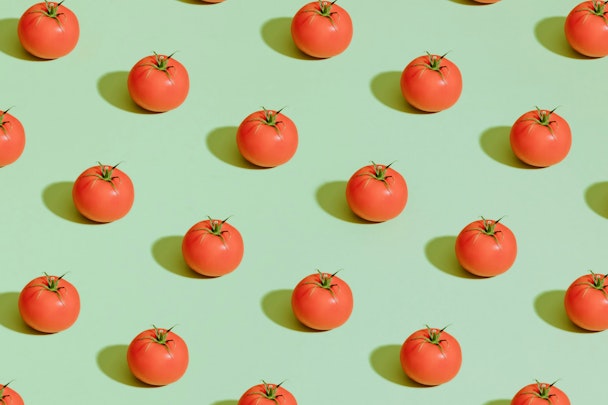Buy your tomatoes first-class flights to your events (it might be more sustainable)
For The Drum’s focus week on food & drink, DRPG’s Dale Parmenter takes stock of the frustratingly complex reality of figuring out what’s actually more sustainable in events supply chains.

DRPG's Dale Parmenter gives a taste of the complex world of event supply chain sustainability / Pawel Czerwinski via Unsplash
Event sustainability is a hot topic right now, and rightfully so. We all have a role to play in helping the industry evolve into a more sustainable model for the planet and for future generations.
But there are so many factors within the events industry that we need to look at; figuring out how to actually be more sustainable can be quite daunting.
But when you begin to incorporate sustainable practices from the very start of the planning process, it’s simpler to do than you’d imagine. During this process, there are seven key areas to look at (location, transport, energy, waste, materials, water and inclusivity), aligned to the UN Sustainable Development Goals.
Keeping an eye on an entire supply chain when planning an event is vital to keeping things as sustainable as possible. Food and drink align with all seven of those goals, and they play a large part in the sustainability and accessibility of events.
Advertisement
What does sustainably sourced food look like?
When sourcing event food, you have to review the whole supply chain. If you’re using locally grown vegetables, make sure to check whether the packaging is recyclable and manufactured locally; how much energy has been used to grow them; and whether there’s a more energy-efficient option available. Before you commit to any supplier, it’s important to do your research, even on the small things. They can make a huge difference to the carbon output of your event.
Don’t forget to look out for accreditations like B Corp, Fair Trade, and the Red Tractor, which indicate that ethical practices are undertaken throughout the lifecycle of the food. A great tip is to keep the supply chain as short as possible and ask yourself if you can name every company that was involved in bringing food and drink to your event.
Advertisement
Is local produce always the best option? Introducing the BOSS method
In events we’ve done recently, we’ve hosted over 150 clients with a 97% locally sourced menu (within 20 miles). But this doesn’t necessarily mean that it’s the most sustainable way of doing things. There are plenty of misconceptions in carbon-positive food.
For example, Spanish-grown tomatoes may be better for the environment than British-grown. Spanish tomatoes carry a far lower carbon cost because tomato plants thrive in warm Mediterranean fields whereas most UK tomatoes are grown in greenhouses powered by fossil fuels.
Vegan or veggie foods, meanwhile, sometimes have larger-than-expected carbon footprints, in some cases even more than comparable meat products, when you take the larger supply chain into account.
Or how about this one – less surprising, but an ongoing problem – many cardboard coffee cups still aren’t recyclable by the most popular routes due to their inner plastic lining (back in 2018, the BBC reported that that applied to 99.75% of all such cups; now, specialist recyclers exist for cardboard cups, but most normal household recycling centers still won’t take them).
It can all become very confusing, but it’s all about finding the best overall sustainable solutions (or the BOSS, as we call it – we’ve developed an app of the same name, helping event planners to track all aspects of an event’s output and impact). That, and making the odd compromise when needed. If you’re committed to working with suppliers that you have a pre-existing relationship with, help educate them on sustainable practices and, if you can, connect them with the right people who can help them make some changes.
Suggested newsletters for you
Tracking your progress
It’s up to every single one of us to make a difference. Part of this is supporting one another and not being afraid to ask for advice or guidance on the topic – even if that means going to your competitors and asking what they’re doing to lower their carbon footprint.
However you decide to help make the industry more sustainable, it’s important to track your progress. And reporting back to governing bodies if fast becoming no longer a ‘want’ but a ‘need’.
There are plenty of great ways to identify sustainably sourced foods and drinks already available out there. When you start to track your sustainable swaps, you can instantly see just how much something as simple as a meal or a beverage can impact the overall sustainability of your event. But don’t forget – it’s important to begin incorporating sustainable solutions from the very beginning of a project, rather than try to shoehorn things in further down the line.
For more about food, drink, and the smartest ways to market them, check out our dedicated focus week hub.
Content by The Drum Network member:

DRPG
DRPG is one of the longest established, trusted and uniquely integrated communication and production specialists, famous for making anything possible as we connect...
Find out more
